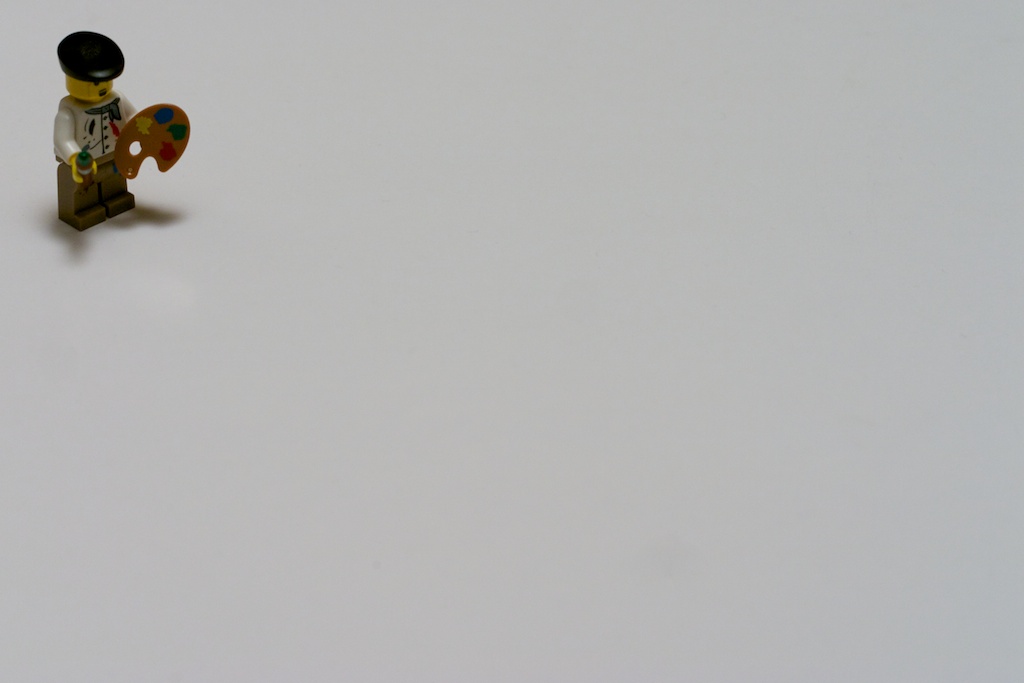
Another month come and gone! Time to move to start shifting to our next subject. If you’re anything like me, or that little Lego Man in the image above, the blank canvas can sometimes be a little intimidating. I’ve found that often the hardest things is simply figuring out where to begin. Maybe that’s not the case for you. Maybe you’ve always got a perfectly clear idea of where to start, but have trouble moving through it all efficiently. We all have our little tricks to help make our creative lives simpler, and that’s where we’re going this month. We’re going to dive into the world of templates and work-flow!
So if you’ve got a system that works great for you, share it. Even the smallest little work-flow trick can have a major impact on the ability to work through a challenge. Show us what you’ve got!
If you need some inspiration, why not check out a previous contribution from Jamey Scott: Stem Workflow [Video Tutorial]
We encourage contributions from the community; either on or off-topic of the monthly theme. It’s what makes this site so special. If you’d like to share something with the community, contact shaun [at] designingsound (dot) org to get the ball rolling. Next month will foley month. So if that’s more your speed, start putting together those contributions now!
I completely agree. A blank canvas can definitely be daunting!
One thing I’ve often read about is that, that nasty feeling often comes from self-judgement; very similar to what’s called ‘writer’s block’.
A few years ago I read a book on music composition (and I sadly can’t remember the title or the author) in which the author spoke of his fear of the blank page. And his way of overcoming it was by always keeping sketched pages around. That way, he never started from scratch. And when the block was severe, playing a couple of those sketches was sometimes enough to spark his creative mind into action.
I’ve also come across some very inspiring texts in this regard (which I like to keep handy):
– Randy Thom’s “On Being Creative” (http://www.filmsound.org/randythom/creative.htm) where he suggests: “Reorganize chance. That is the basis of your work” and says that “a craftsman knows how to avoid accidents — an Artist knows how to use them”.
– Another interesting Randy Thom text was actually posted here in DS, “Behind the Art: Randy Thom”, where he speaks about mistakes as “tools for the artist” (https://designingsound.org/2011/01/behind-the-art-randy-thom/)
– I also strongly suggest to have a look at “How To Overcome Sound Design Writer’s Block” (http://www.gamesounddesign.com/How-To-Overcome-Sound-Design-Writers-Block.html)
Finally, a couple of lateral thinking tools I often discuss with my students (CLOSAT and SCAMPER) and some suggested reading on planning and structuring the overall creative approach of a sound design ‘composition’.
– CLOSAT is an acronym presented by Michael Rabiger in “Developing Story Ideas”. It stands for Character, Location, Situation, Object, Action and Theme. He suggests creating a journal where you ‘collect’ items/ideas and classify them in these categories. Then, when once you’ve got a few, you can re-combine them to improvise stories. In the realm of sound design, not only one can use them to ‘play’ by making short vision-less sound compositions, but, when working for a project, one can use it to clarify the elements in the piece. How can I give personality to this or that character through sound signifiers? Are there any motifs I can use to recall a particular theme? What is unique to this location?
– At this point I’d also like to reference the ideas of ‘sound plan’ and ‘sound map’ proposed by David Sonnenschein in “Sound Design” (pg. 1-50). Once the story-telling elements of the sound design are identified, the directions one can take are clearer and thus, less daunting.
– SCAMPER is also an acronym. I’ve read that the techniques were originally compiled by Alex Osborn and put into mnemonic form by Bob Eberle. It stands for substitute, combine, adapt, modify, put to another use, eliminate and reverse. Anyone who has watched “Once” (TV Series) has already seen plenty of examples of how this applies to transforming stories. And the same can be used as a game in sound design just to spark ideas and get the ball rolling.
I’m looking forward to the rest of the posts! Really interesting topic :)